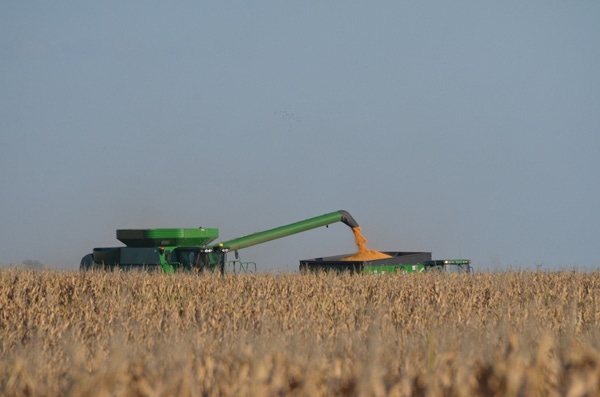October 27, 2013

Leaving corn to dry in the field exposes a crop to unfavorable weather conditions, as well as wildlife damage. A crop with weak plant integrity is more vulnerable to yield losses from stalk lodging and ear drop when weathering conditions occur. The widespread root lodging that occurred as a result of wind storms in July is contributing to this problem. Additional losses may occur when ear rots reduce grain quality and can lead to significant dockage when the grain is marketed. Some ear rots produce mycotoxins, which may cause major health problems if fed to livestock.
Several years ago we conducted a study that evaluated effects of four plant populations (24,000, 30,000, 36,000 and 42,000 plants/acre) and three harvest dates (early-mid October, November and December) on the agronomic performance of four hybrids differing in maturity and stalk quality. Results of this study provide some insight on yield losses and changes in grain moisture and stalk quality associated with delaying harvest. The following lists some of the major findings from this research.
• Results showed that nearly 90% of the yield loss associated with delayed corn harvest occurred when delays extended beyond mid-November.
• Grain moisture decreased nearly 6% between harvest dates in October and November. Delaying harvest after early to mid-November achieved almost no additional grain drying.
• Higher plant populations resulted in increased grain yields when harvest occurred in early to mid-October. Only when harvest was delayed until mid-November or later did yields decline at plant populations above 30,000/acre.
• Hybrids with lower stalk strength ratings exhibited greater stalk rot, lodging and yield loss when harvest was delayed. Early harvest of these hybrids eliminated this effect.
Like what you're reading? Subscribe to CSD Extra and get the latest news right to your inbox!
In this study, yields averaged across experiments, populations and hybrids decreased about 13% between the October and December harvest dates. Most of the yield loss, about 11%, occurred after the early-mid November harvest date. In three of the eight experiments, yield losses between October and December harvest dates ranged from 21 to 24%. In the other five experiments, yield losses ranged from 5 to 12%.
Read more about how late harvest affects corn performance from Ohio State.
You might also like:
Base risk management on production costs
You May Also Like




